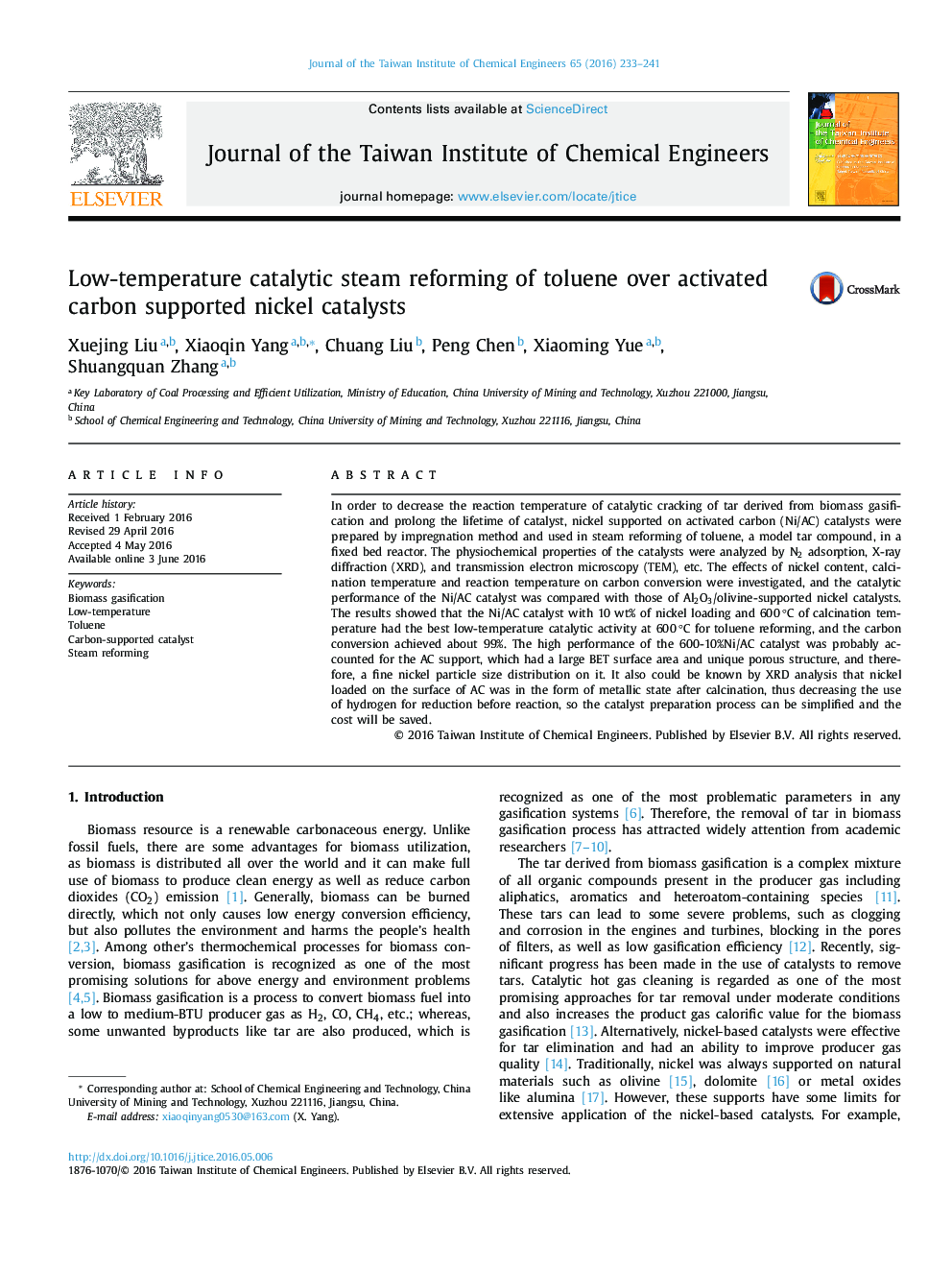| کد مقاله | کد نشریه | سال انتشار | مقاله انگلیسی | نسخه تمام متن |
|---|---|---|---|---|
| 690218 | 1460409 | 2016 | 9 صفحه PDF | دانلود رایگان |
• Ni/AC catalyst with 10 wt% of nickel loading and 600 °C of calcination temperature had an excellent low-temperature activity at 600 °C.
• Depletion and structure's change of the AC support was significant at higher temperatures.
• The catalyst was more active than Ni/Al2O3 and Ni/olivine at low reforming temperature.
• A high dispersion of Ni particles on AC was confirmed.
In order to decrease the reaction temperature of catalytic cracking of tar derived from biomass gasification and prolong the lifetime of catalyst, nickel supported on activated carbon (Ni/AC) catalysts were prepared by impregnation method and used in steam reforming of toluene, a model tar compound, in a fixed bed reactor. The physiochemical properties of the catalysts were analyzed by N2 adsorption, X-ray diffraction (XRD), and transmission electron microscopy (TEM), etc. The effects of nickel content, calcination temperature and reaction temperature on carbon conversion were investigated, and the catalytic performance of the Ni/AC catalyst was compared with those of Al2O3/olivine-supported nickel catalysts. The results showed that the Ni/AC catalyst with 10 wt% of nickel loading and 600 °C of calcination temperature had the best low-temperature catalytic activity at 600 °C for toluene reforming, and the carbon conversion achieved about 99%. The high performance of the 600-10%Ni/AC catalyst was probably accounted for the AC support, which had a large BET surface area and unique porous structure, and therefore, a fine nickel particle size distribution on it. It also could be known by XRD analysis that nickel loaded on the surface of AC was in the form of metallic state after calcination, thus decreasing the use of hydrogen for reduction before reaction, so the catalyst preparation process can be simplified and the cost will be saved.
Figure optionsDownload as PowerPoint slide
Journal: Journal of the Taiwan Institute of Chemical Engineers - Volume 65, August 2016, Pages 233–241
